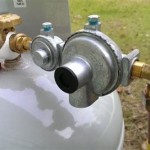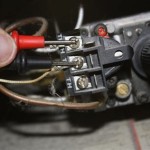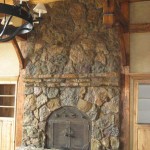Deck Fireplace Designs: Enhancing Outdoor Living Spaces
A deck fireplace can transform a simple outdoor area into a captivating and functional living space. Beyond providing warmth during cooler evenings, a fireplace acts as a focal point, adding aesthetic appeal and creating an inviting atmosphere for relaxation and entertainment. The design possibilities are extensive, ranging from traditional masonry structures to modern, prefabricated options, allowing homeowners to tailor their deck fireplace to complement their personal style and the existing architecture of their home.
The decision to incorporate a fireplace into a deck design requires careful consideration of several factors. These include the available space, budget constraints, local building codes, and aesthetic preferences. Structural requirements are paramount, as the deck itself must be capable of supporting the weight of the fireplace, particularly for heavier masonry constructions. Furthermore, proper ventilation and safety measures are crucial to prevent fire hazards and ensure a comfortable and enjoyable outdoor experience.
The selection of materials plays a significant role in the overall look and durability of the deck fireplace. Brick, stone, concrete, and metal are commonly used, each offering unique aesthetic qualities and varying levels of resistance to the elements. Integrating landscaping elements, such as plants and decorative rocks, can further enhance the ambiance and seamlessly blend the fireplace into the surrounding environment.
Structural Considerations and Deck Reinforcement
One of the most critical aspects of designing a deck fireplace is ensuring the existing deck structure can adequately support its weight. Traditional masonry fireplaces, constructed from brick or stone, are inherently heavy and necessitate significant structural reinforcement. A structural engineer should be consulted to assess the deck's load-bearing capacity and recommend appropriate modifications. This may involve adding additional support posts, beams, or even a completely separate foundation to bear the fireplace's weight.
The weight distribution is another key factor. Concentrated weight from a heavy fireplace can overstress specific areas of the deck, leading to structural failure. Proper planning involves distributing the weight evenly across the deck's framing. This can be achieved by spreading the fireplace's footprint over a larger area or by reinforcing the framing directly beneath the structure.
For decks not originally designed to support a fireplace, a separate, ground-level foundation is often the most reliable solution. This eliminates the need for extensive deck modifications and ensures the fireplace sits on a stable and independent base. The foundation should extend below the frost line to prevent shifting due to freezing and thawing cycles. The foundation material should be durable and resistant to moisture, such as poured concrete or concrete blocks.
Prefabricated fireplaces, while generally lighter than masonry options, still require careful consideration of their weight. While they may not necessitate the same level of structural reinforcement as a brick fireplace, it is still crucial to verify the deck's capacity to safely support the unit. Manufacturers typically provide weight specifications that should be reviewed by a qualified professional.
Materials Selection and Design Styles
The choice of materials profoundly impacts the aesthetic and functional aspects of a deck fireplace. Brick fireplaces offer a classic and timeless appeal, blending seamlessly with traditional architectural styles. The inherent thermal mass of brick provides excellent heat retention, making it ideal for extended use during cooler evenings. Brick is also durable and relatively low-maintenance, requiring minimal upkeep over its lifespan.
Stone fireplaces provide a more rustic and natural aesthetic. Different types of stone, such as river rock, flagstone, or fieldstone, can be incorporated to create unique textures and patterns. Stone is extremely durable and resistant to weathering, making it a long-lasting choice for outdoor applications. The natural variations in color and texture add visual interest and can complement the surrounding landscape.
Concrete fireplaces offer a modern and versatile design option. Concrete can be molded into various shapes and sizes, allowing for customized designs that seamlessly integrate with contemporary architectural styles. The exposed concrete finish provides a sleek and minimalist aesthetic, while adding pigments to the concrete mix can achieve a range of colors and textures. Concrete is also durable and relatively fire-resistant, making it a safe and practical choice.
Metal fireplaces, typically constructed from steel or stainless steel, offer a sleek and contemporary look. Metal is lightweight and durable, making it a suitable option for decks with limited load-bearing capacity. Metal fireplaces are often prefabricated, allowing for easy installation and a wide range of design options. The metallic finish can be complemented by adding decorative stone or brick accents to create a more visually interesting design.
The design style of the fireplace should complement the existing architecture of the home and the overall aesthetic of the deck. A traditional brick fireplace may be best suited for a classic colonial-style home, while a modern concrete fireplace may be more appropriate for a contemporary dwelling. Consider incorporating elements such as mantels, hearths, and decorative accents to further enhance the fireplace's visual appeal.
Safety Considerations and Building Codes
Safety is paramount when designing and constructing a deck fireplace. Local building codes and regulations must be strictly adhered to ensure the fireplace is installed safely and complies with all applicable fire safety standards. These codes typically address issues such as clearance distances from combustible materials, chimney height requirements, and the use of spark arrestors.
Adequate clearance from combustible materials, such as wood siding, railings, and furniture, is crucial to prevent fire hazards. Building codes typically specify minimum clearance distances that must be maintained around the fireplace. Heat shields or non-combustible barriers can be installed to reduce the required clearance distances in certain situations.
The chimney height must be sufficient to ensure proper draft and prevent smoke from blowing back into the living space. Building codes typically specify minimum chimney heights based on the fireplace's size and the proximity of nearby structures. A chimney cap or spark arrestor should be installed to prevent embers from escaping and potentially igniting nearby vegetation or structures.
Proper ventilation is essential to ensure complete combustion and prevent the buildup of carbon monoxide. The fireplace should be designed to allow for adequate airflow to the firebox. A chimney liner can be installed to improve draft and prevent creosote buildup, which can pose a fire hazard.
Regular maintenance is crucial to ensure the fireplace operates safely and efficiently. The chimney should be inspected and cleaned annually by a qualified professional to remove creosote and other debris. The firebox should be regularly cleaned to remove ash and buildup. Any damage to the fireplace structure, such as cracks or loose bricks, should be promptly repaired to prevent further deterioration and potential safety hazards.
The placement of the fireplace on the deck also requires careful consideration. It should be located away from high-traffic areas and areas where children or pets may be playing. Consider prevailing wind patterns when determining the fireplace's location to minimize the risk of smoke blowing towards seating areas or the house.
Fire extinguishers and other fire safety equipment should be readily accessible in the event of an emergency. It is also important to educate all members of the household about fire safety procedures and the proper use of the fireplace. By adhering to these safety considerations and building codes, homeowners can ensure their deck fireplace provides a safe and enjoyable outdoor living space for years to come.

30 Outdoor Fireplace Ideas Cozy Fireplaces

Outdoor Fireplace Design Ideas Getting Cozy With 10 Designs Unilock

53 Most Amazing Outdoor Fireplace Designs Ever

Outdoor Fireplace Ideas The Home Depot

25 Outdoor Fireplace Ideas Fireplaces Fire Pits

Outdoor Fireplace Design Secrets From An Expert

Outdoor Fireplace Design Ideas Judd Builders Asheville Nc

Five Fabulous Outdoor Fireplace Ideas Coogans Landscape Design

30 Outdoor Fireplace Ideas Cozy Fireplaces

Outdoor Fireplace Design Ideas
Related Posts








